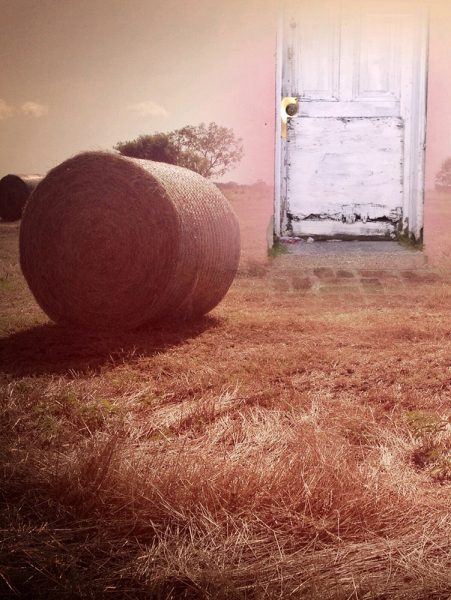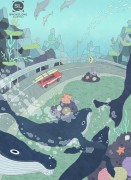The tension and the history evident in the dialogue between Pete and his brother drive the story’s action. Can you talk about the challenge in writing a story about a phone conversation?
There’s something urgent about a phone call. Maybe that’s just the comic book fan in me who thinks phone = phone booth = Superman. Granted, most phone calls are (if super) super banal, but I like the potential drama of phone calls. You typically call someone because you need something. And “need” is always an interesting storytelling device. The danger I suppose is the disembodied quality of a phone call. It’s tempting to let the characters just become voices.
I like how the story includes a third character who doesn’t appear in a scene. Arguably there’s a fourth character as well, if you count the wasp. (And a cast of thousands if you count the Japanese honeybees). How do you think about managing backstory in the midst of an immediate exchange between two characters?
I usually try to start off with some forward action and then slow down periodically with flashes of backstory. But really, it’s the backstory that keeps everything afloat. Like helium. You inflate a character with memories and experiences and then hope no one gets too close to the character and sees that it’s just an illusion, hot air. Typically, the most interesting part of a story is the backstory: those moments where the narrator has relaxed and let the reader have access to the life of a character. But in flash fiction, it’s easy to bungle backstory. I’ve definitely learned that the hard way! Which is why I’m always impressed when someone can pull off a successful ratio of forward momentum + character dips in under a thousand words.
How does putting a character at risk—whether the risk is small, like getting stung by a wasp, or large, like getting cooked by global incineration—help you learn or reveal more about human nature in general?
I really wish I knew more about how it works—the science behind it, etc. All I know is that risk is a wonderful kick-starter for a story (as well as a board game that makes people hate each other, but that’s a different story). It sounds a little evil, but it’s all about bombarding a character with trouble and then seeing what this bombardment reveals—and not just what it reveals about the character but what it reveals about you as well.
I admire this story’s insight into what—to a casual observer—might seem like an everyday occurrence. Is realism your most favored mode of storytelling?
I have a love-hate relationship with realism. I’m like Quentin Compson from Absalom, Absalom! (I’m living in Mississippi now, so I’m allowed to make random Faulkner allusions). But instead of over-protesting, “I don’t hate the South! I don’t hate the South! I don’t!” I find myself saying, “I don’t hate realism! I don’t hate realism! I don’t!”
This reader ended up identifying more with Pete than with his brother—and perhaps more with Pete’s offstage wife than with either brother—but part of what makes the story so good is that I easily can imagine other readers sympathizing more with the brother than with Pete. How can other writers think about creating complex characters within the space of so few words?
Ha, yeah, the wife is totally the most rational character …. For me, it’s about never condescending. I try never to laugh at a character. Laugh with, yes, God yes. But hopefully never at. It takes distance to laugh at. And the further you are from your characters, the less complex they’re going to be.



 The core workshop of SmokeLong Fitness is all in writing, so you can take part from anywhere at anytime. We are excited about creating a supportive, consistent and structured environment for flash writers to work on their craft in a community. We are thrilled and proud to say that our workshop participants have won, placed, or been listed in every major flash competition. Community works.
The core workshop of SmokeLong Fitness is all in writing, so you can take part from anywhere at anytime. We are excited about creating a supportive, consistent and structured environment for flash writers to work on their craft in a community. We are thrilled and proud to say that our workshop participants have won, placed, or been listed in every major flash competition. Community works.